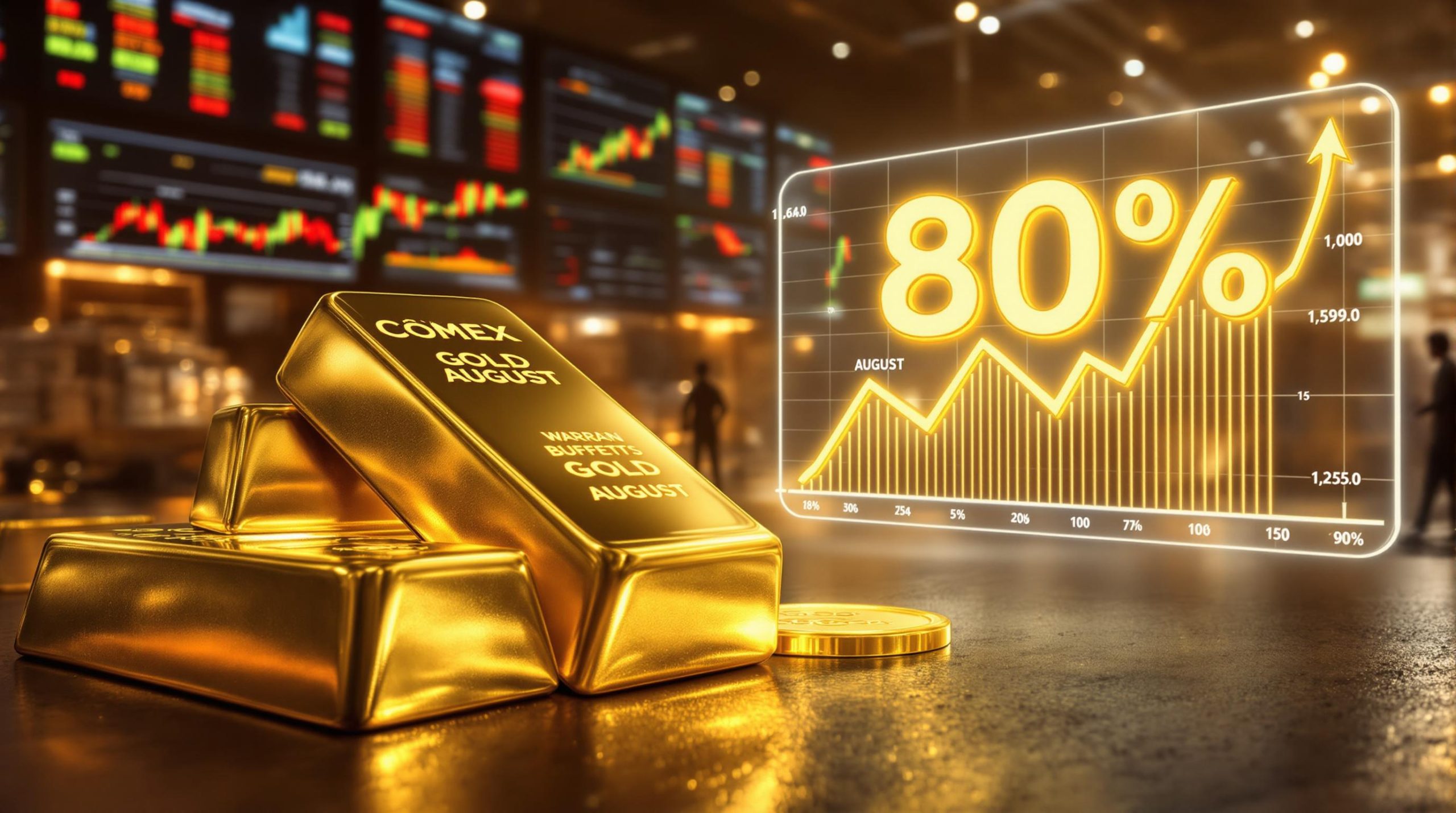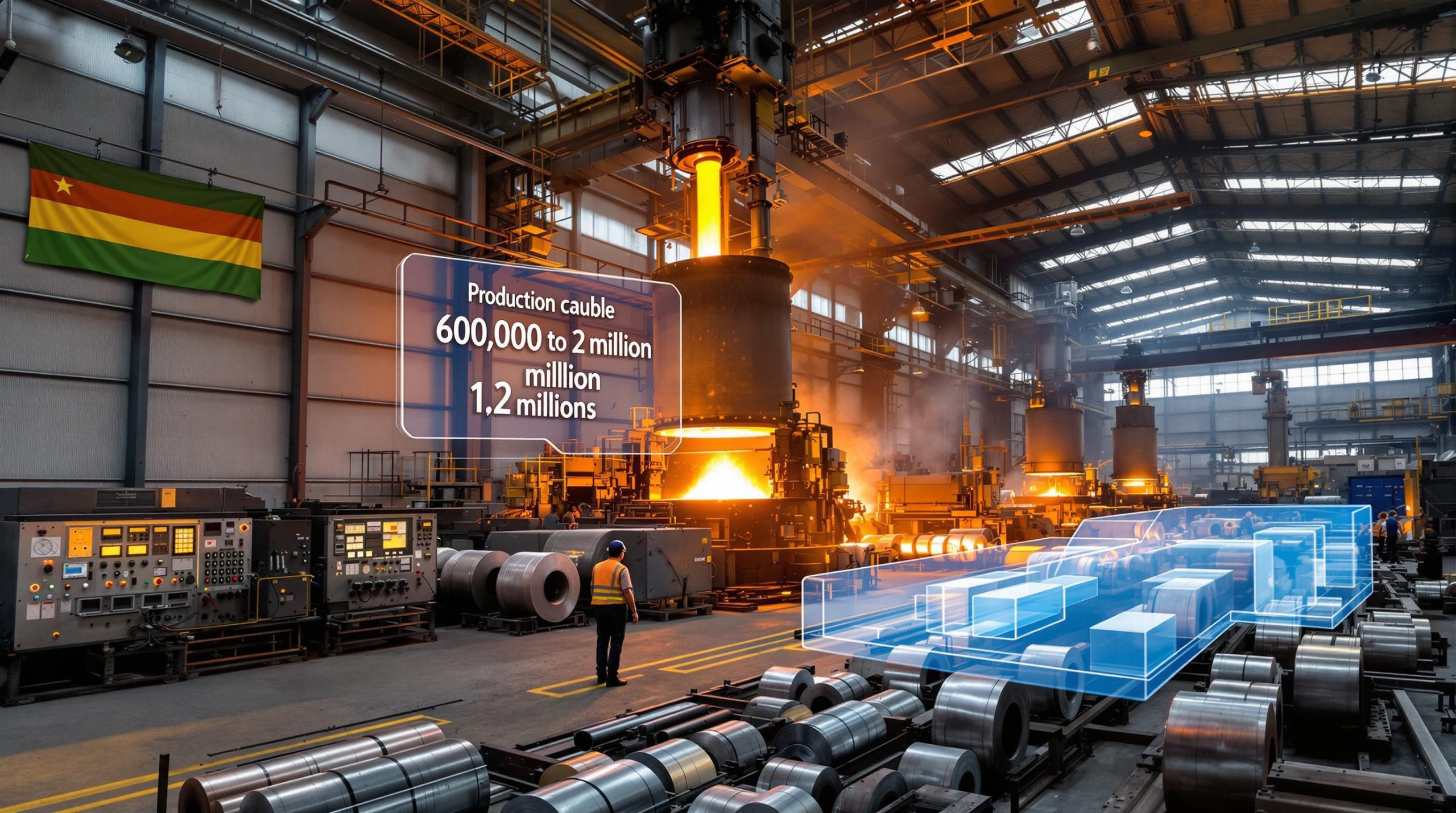What's Causing the Current Aluminum Price Slump?
The aluminum market is currently experiencing significant downward pressure as prices remain stubbornly in the doldrums. This persistent slump stems from multiple factors converging simultaneously, creating challenging conditions for market participants across the value chain.
Supply-Demand Imbalance Creating Downward Pressure
The fundamental driver behind aluminum's price weakness is a growing supply-demand imbalance that shows little sign of resolution in the near term. Recent capacity replacement policies in China have accelerated the commissioning of hydropower aluminum projects in Yunnan province, introducing substantial new supply into an already saturated market.
"The release of new supply will further exacerbate the supply-demand imbalance, suppressing aluminum prices," notes the SMM analysis team in their July 2025 market report. Industry data indicates these Yunnan projects are adding approximately 500,000 metric tons per year of new capacity—significant volume entering the market at precisely the wrong time.
This expansion is particularly problematic as it coincides with the industry's traditional consumption off-season. According to CRU Group data, seasonal consumption typically drops by 15-20% during the third quarter, creating a perfect storm of increasing supply meeting decreasing demand.
Seasonal Consumption Patterns Affecting Market Dynamics
The aluminum industry operates with well-established seasonal patterns that are currently weighing heavily on prices. As the consumption off-season deepens, several key trends are emerging:
- Reduced purchasing volumes from downstream fabricators, with many operating at minimum inventory levels
- Declining liquid aluminum usage, falling back from previous highs as fabricators adjust production rates
- Weakened order volumes compared to previous months across most end-use sectors
- Limited restocking activities primarily driven by immediate needs rather than anticipatory purchasing
This seasonal pattern in 2025 appears particularly pronounced compared to five-year averages, with current off-season demand showing approximately 8% weaker performance than typical seasonal lows, according to industry benchmarks.
Macroeconomic Factors Creating Mixed Signals
While domestic Chinese economic policies remain broadly supportive of industrial growth, international markets are experiencing volatility that adds another layer of complexity:
- Tariff impact analysis creating uncertainty in global trade flows, particularly with the potential implementation of a 25% tariff on Japanese imports to the US starting August 1, 2025
- Political uncertainty and leadership change rumors affecting investor confidence
- Fluctuating risk appetite among investors and market participants, leading to choppy trading patterns
The case of Yunnan's 2025 hydropower aluminum expansion mirrors a similar policy-driven capacity surge in Sichuan during 2022, which depressed prices for approximately six months according to Wood Mackenzie analysis. This historical precedent suggests the current doldrums could persist without significant changes to supply discipline or demand acceleration.
How Are Production Costs Influencing Aluminum Prices?
While aluminum prices remain under pressure, production costs play a crucial role in establishing price floors and potentially limiting further declines. The current cost structure shows signs of resilience despite market weakness.
Raw Material Cost Dynamics
The cost components supporting aluminum prices demonstrate mixed signals, with some elements showing weakness while others maintain stability:
Alumina Market Conditions
Recent market expectations point to increased spot alumina deliveries and warehousing, creating potential downward pressure on this key input cost:
- Futures prices have retreated from previous gains, signaling market expectations of continued weakness
- Spot market circulation remains relatively constrained despite futures movement
- Spot prices are declining at a noticeably slower pace than futures indicators
- This spot-futures divergence creates market tension but limits immediate production cost impacts
"Alumina cost support has not significantly weakened, and its impact on electrolytic aluminum costs will be limited in the short term," according to SMM's cost analysis published in July 2025. This assessment suggests alumina prices are providing some protection against further aluminum price erosion.
Production Input Cost Analysis
Aluminum smelting remains an energy-intensive process, with power representing 35-40% of total production costs according to International Aluminium Institute data. This creates significant regional variations in production economics:
- Energy costs continue as the primary differentiator between high-cost and low-cost producers
- Regional variations in power pricing create substantial cost advantages for hydropower-based smelters in Yunnan (approximately 0.28-0.32 yuan/kWh) versus coal-based operations in Shandong (0.45-0.50 yuan/kWh)
- Raw material cost support has not significantly weakened across most input categories
- Production cost floors continue to provide resistance against further price declines, with Shandong smelters maintaining a cost floor around 16,800 yuan/mt despite alumina volatility
The alumina cost structure itself adds another layer of complexity, with industry experts at Harbor Aluminum breaking down alumina costs as approximately 45% bauxite, 15% caustic soda, and 25% energy in their 2025 Cost Report. These interlocking cost components create a relatively stable floor despite market pressures.
What's Happening in Inventory and Trading Patterns?
Inventory dynamics and trading patterns provide critical insights into market conditions beyond simple price movements. Current indicators point toward continued challenges for aluminum prices in the doldrums.
Inventory Accumulation Trends
Despite some short-term fluctuations, the fundamental trend points toward continued inventory buildup across major aluminum markets:
- Temporary adjustments in aluminum shipment scheduling may delay inventory accumulation speed in some regions
- Short-term inventory fluctuations have occurred but don't change the underlying direction
- Market expectations strongly favor continued inventory growth through the remainder of the off-season
- Off-season consumption patterns reinforce the inventory accumulation trajectory across most markets
The current inventory-sales ratio stands at approximately 1.8x compared to a five-year average of 1.3x according to SMM Warehouse Data, clearly indicating persistent oversupply conditions. Historical precedent from 2020 shows how damaging such inventory buildups can be—a 1.2 million metric ton accumulation during that period triggered a 22% price collapse over just 90 days.
Trading Activity and Market Sentiment
Recent trading sessions have shown mixed signals, with occasional bright spots amid generally subdued activity:
- Slight improvements in market trading atmosphere during specific sessions
- Transactions occurring at premiums against online prices in several regions (East China transactions at SMM price +10 yuan/mt premium)
- Marginally improved purchasing willingness from downstream consumers in certain segments
- Regional price differentials holding relatively steady despite market pressures
- Limited upside potential despite these occasional positive indicators
The SHFE aluminum contract shows open interest of 274,000 lots, indicating substantial market positioning, though trading volumes suggest cautious sentiment rather than strong directional conviction among participants.
How Are Different Aluminum Market Segments Performing?
The aluminum market comprises several interconnected segments, each experiencing unique dynamics during the current price doldrums. Understanding these differences provides a more nuanced view of market conditions.
Primary Aluminum Market Conditions
The primary aluminum market shows signs of stabilization but lacks strong upward momentum:
- Recent trading sessions saw slight price improvements, with SMM A00 aluminum spot prices reaching 20,570 yuan/mt (up 50 yuan/mt)
- Regional markets reported transactions at small premiums above quoted prices
- Price spreads between major production regions remain relatively stable
- Some downstream production lines that had implemented cuts are gradually resuming operations
- Overall demand improvement remains limited despite these marginal positive indicators
Primary producers have largely maintained production discipline in the face of weak prices, with major smelters focusing on operational efficiency rather than output maximization. This disciplined approach has helped prevent a more dramatic price collapse despite the challenging market environment.
Secondary Aluminum and Recycling Markets
The secondary and recycling segments face their own unique challenges, with greater price differentiation than seen in primary markets:
Recycled Aluminum Raw Materials
The aluminum scrap market demonstrates interesting divergence between grades:
- Overall scrap market has remained relatively flat despite primary market fluctuations
- Downstream scrap utilization enterprises experiencing sluggish order flow
- Procurement primarily driven by rigid demand rather than speculative purchasing
- Product differentiation and regional disparities persist across scrap categories
- Different scrap grades showing varied price resilience:
- Southeast Asia aluminum scrap supported by tight supply (15,900-17,400 yuan/mt excluding tax)
- Baled UBC scrap facing significant downward pressure (15,200-15,700 yuan/mt excluding tax)
"Shredded aluminum tense scrap is strongly supported by tight supply, and its price resilience is expected to hold," according to SMM's July recycling market assessment. This divergence between scrap types highlights the importance of quality and processing challenges in the recycling segment.
Secondary Aluminum Alloy Market
Secondary aluminum prices demonstrate limited correlation with primary aluminum's slight rebound:
- Secondary aluminum alloy (ADC12) price holding steady around 20,000 yuan/mt
- Current demand remains sluggish with weaker order volumes compared to previous months
- Transaction performance reported as weak by market participants
- Raw material undersupply provides some support for secondary aluminum alloy prices
- Weak demand constrains further upside potential despite supply limitations
The spread between primary and secondary materials has narrowed in some cases, challenging traditional recycling economics and forcing secondary producers to focus on efficiency improvements and value-added services to maintain margins.
What Do Futures Markets Indicate About Aluminum Pricing?
Futures markets provide valuable forward-looking insights into aluminum price expectations. Current futures activity suggests continued near-term challenges for aluminum prices.
Futures Market Activity Analysis
Recent futures market activity reveals cautious positioning among market participants:
- SHFE aluminum 2509 contract opened at 20,400 yuan/mt and closed at 20,520 yuan/mt, showing limited range-bound trading
- Trading volume reached 58,900 lots with open interest at 274,000 lots, reflecting substantial but not excessive market positioning
- LME aluminum opened at $2,573.5/mt and closed at $2,589/mt, indicating similar sentiment in international markets
- Price spreads between contracts suggest market expectations for continued near-term weakness with potential gradual improvement in later months
The futures curve structure currently shows a modest contango (forward prices higher than spot), typically indicating expectations of continued inventory builds and near-term price pressure. This aligns with the fundamental supply-demand imbalance affecting the physical market.
Technical Indicators and Trading Patterns
From a technical perspective, aluminum futures suggest limited directional momentum:
- Resistance levels have formed at recent price ceilings around 20,800 yuan/mt on the SHFE
- Support zones near 20,000 yuan/mt have prevented more dramatic price collapses
- Range-bound trading patterns likely to continue in the near term based on technical indicators
- Limited momentum indicators suggest consolidation rather than strong directional movement
The technical picture reinforces the fundamental outlook, with price action reflecting the market's struggle to find direction amid conflicting signals from supply growth and occasional demand bright spots.
What's the Outlook for Aluminum Prices?
Synthesizing the various factors affecting the aluminum market provides a framework for understanding price expectations over different time horizons.
Short-Term Price Projections
Market analysis suggests aluminum prices in the doldrums will likely:
- Remain in a doldrums pattern through the remainder of the traditional off-season
- Experience limited upside potential despite occasional positive indicators
- Continue facing pressure from persistent supply-demand imbalances
- Fluctuate within established ranges (approximately 20,000-20,800 yuan/mt) without breaking major support or resistance levels
"SMM expects that aluminum prices will exhibit a pattern of being in the doldrums in the short term," according to their July market outlook. This assessment aligns with both technical indicators and fundamental market conditions.
Key Factors to Monitor
Several critical factors will determine the timing and magnitude of any potential price recovery:
- Downstream consumption patterns as the market transitions out of the off-season (typically September-October)
- Production or shipment schedule adjustments from major producers responding to weak prices
- Inventory level evolution across different regions and throughout the value chain
- Macroeconomic conditions and trade policy developments, particularly tariff implementations
- Raw material cost trends, especially alumina pricing and energy cost movements
The market will be particularly sensitive to any signals of production discipline from major producers, as voluntary output restrictions could accelerate price recovery if implemented at sufficient scale.
Regional Market Variations
Different regional markets may experience varying conditions despite global aluminum price pressure:
- East China markets showing slightly improved transaction volumes in recent sessions
- Central China seeing gradual resumption of previously curtailed production capacity
- Price differentials between regions remaining relatively stable despite logistics challenges
- Regional inventory distributions influencing local pricing dynamics and creating arbitrage opportunities
These regional variations create both challenges and opportunities for market participants, with location-specific factors potentially offering strategic advantages despite the overall price weakness.
How Are Downstream Industries Responding?
The response of aluminum-consuming industries provides important insights into potential demand recovery timing and strength. Current indicators show mixed signals across different sectors.
Aluminum Extrusion Industry Performance
The downstream fabrication sector demonstrates some resilience amid challenging conditions:
- Operating rates in the domestic aluminum extrusion industry increased by 1 percentage point month-on-month to 50.5%
- Some enterprises reporting new automotive extrusion orders driving modest activity improvements
- Overall utilization rates remain constrained by seasonal factors and weak construction sector demand
- Production adjustments implemented to balance supply with current demand levels
The modest improvement in extrusion activity offers a potential early indicator of demand stabilization, though the increase remains too limited to significantly impact overall market sentiment. The automotive sector's relative strength compared to construction highlights the importance of end-market diversification for aluminum fabricators.
Aluminum Billet Market Dynamics
The aluminum billet segment faces its own challenges but shows some supply-side discipline:
- Production cuts by manufacturers have alleviated some supply pressure in the billet market
- Current restocking is primarily driven by immediate demand rather than anticipatory purchasing
- Long-term perspective suggests continued inventory accumulation without significant demand improvement
- Expected inventory ranges between 150,000-180,000 metric tons in the near term
"Production cuts by aluminum billet manufacturers have alleviated the arrival pressure on the supply side," according to SMM's July market assessment. This supply discipline has prevented more dramatic price deterioration but hasn't been sufficient to trigger meaningful price recovery.
What External Factors Are Influencing the Aluminum Market?
External factors beyond direct industry dynamics play significant roles in shaping aluminum market conditions. These influences range from trade policies to broader economic indicators.
Global Trade Developments
International trade policies are creating both challenges and opportunities for aluminum market participants:
- Potential implementation of a 25% tariff on Japanese imports to the US starting August 1, 2025
- Ongoing US–China trade war negotiations that could reshape established trade flows
- Adjustments in import/export patterns affecting regional supply-demand balances
- Uncertainty regarding policy implementation timelines creating market hesitation
These trade developments have particular significance for aluminum as a globally traded commodity, with tariff adjustments potentially creating regional price disparities and shifting trade patterns as market participants adapt to policy changes.
Domestic Policy Impacts
Recent policy changes with potential market implications include:
- Adjustments to consumption tax policies for ultra-luxury vehicles with retail prices above 900,000 yuan
- Modified taxation approaches for vehicles without traditional cylinder capacity (e.g., electric vehicles)
- Potential impacts on aluminum demand from automotive sector policy shifts
- Energy policy developments affecting production costs for aluminum smelters
These policy adjustments, while not directly targeting aluminum, may have meaningful indirect effects on demand patterns and production economics across the aluminum value chain.
Employment and Retail Indicators
Economic indicators from major economies show mixed signals for aluminum demand:
- Decreasing US jobless claims suggesting stable employment growth
- Stronger-than-expected US retail sales data (up 0.6% in June)
- Potential price increases driven partially by tariff impacts rather than underlying demand strength
- Overall economic activity maintaining moderate growth despite inflationary pressures
These broader economic indicators provide context for aluminum market expectations but have been insufficient to overcome the more direct supply-demand imbalances currently weighing on prices.
FAQ: Understanding the Aluminum Market Downturn
Why are aluminum prices struggling despite some positive economic indicators?
The disconnect stems from industry-specific factors outweighing broader economic positives. While general economic indicators show some strength, the aluminum industry faces its own supply-demand imbalance due to capacity expansion coinciding with seasonal consumption weakness. This has created inventory buildup that weighs on prices regardless of broader economic health.
Additionally, the aluminum market often responds more directly to industry-specific factors like production costs and inventory levels than to general economic indicators. The current situation demonstrates how capacity expansion policies can create persistent oversupply conditions even amid reasonable macroeconomic performance.
How long might the current aluminum price weakness persist?
Market analysts expect the current price doldrums to continue through the traditional off-season period, with potential improvement beginning in September-October as downstream industries increase purchasing activities. However, several factors could extend the weakness:
- Continued commissioning of new capacity in Yunnan and other regions
- Slower-than-expected demand recovery post-off-season
- Persistent inventory overhang requiring extended drawdown period
- Macroeconomic headwinds affecting construction and durable goods sectors
Historical precedents, such as the 2022 Sichuan capacity expansion, suggest price recovery
Ready to Capitalise on the Next Major ASX Mineral Discovery?
Don't miss another investment opportunity in the mining sector. Discovery Alert's proprietary Discovery IQ model instantly identifies significant ASX mineral discoveries, providing actionable insights for investors seeking an immediate market edge. Explore historic discovery returns on the Discovery Alert discoveries page and position yourself ahead of the market.




